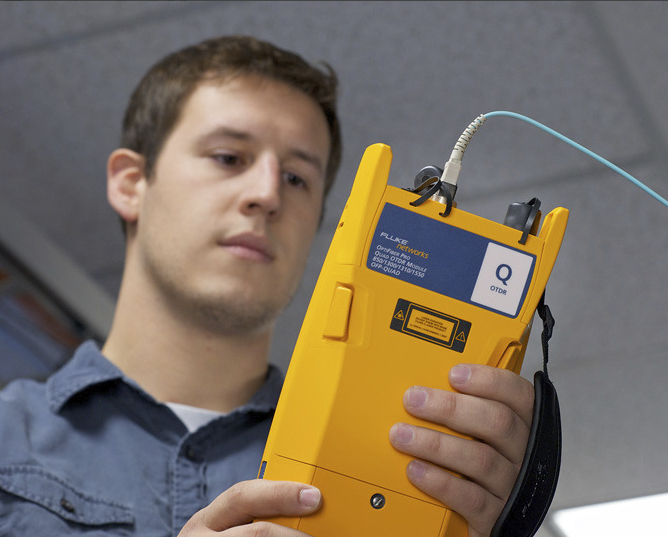Crônicas sobre cabeamento
Benefits of Using 8-Fiber Plug and Play MPO Solutions
The use of plug-and-play 12-fiber MPO solutions for multimode fiber backbones in the data center has been popular for several years, starting with 10 Gigabit Ethernet where 12-fiber MPO assemblies connect MPO-to-LC cassettes or modules that transition the 12-fiber MPO connections to 6 duplex LC connections.
6 de outubro de 2016
Advantage of Automated Fiber Inspection over Manual
Over the past decade, the amount of fiber in the data center has increased significantly due to the need for higher bandwidth between switches and the ever increasing amount of equipment requiring fiber uplinks to storage area networks (SANs), not to mention the demand for maximum availability that calls for redundant primary and secondary fiber network connections to every piece of equipment.
28 de setembro de 2016
28 de setembro de 2016
Deploy and Test Shielded Cable with Category 8
O Subcomitê de cabeamento de cobre TIA TR-42.7 aprovou recentemente as especificações para a categoria de cabeamento 8 (TIA 568 C.2-1), o mais recente sistema de fios de cobre em par trançado projetado para oferecer suporte a futuras aplicações IEEE 25GBASE T e 40GBASE T, atualmente em desenvolvimento.
With all the buzz surrounding Category 8, you and your customers might be wondering how exactly it will impact the deployment and testing of cabling infrastructures.
Let's take a closer look at where it will be deployed and some of the key characteristics that impact installation and testing.
22 de setembro de 2016
Upgrading Your Fiber Plant to 40 and 100 Gigabit Speeds
Just Now Upgrading to 10 Gig? We Didn't Forget About You
While upgrading backbone cable plants in the LAN to support 10 Gig has been going on for several years since the release of the 10GBASE-SR standard for fiber, many enterprise businesses did not previously require these types of speeds, until now.
8 de setembro de 2016
1 de setembro de 2016
Como configurar o DSX-5000 para uma nova instalação?
Configure da forma correta para garantir os melhores resultados de teste com seu DSX-5000
Se você aparecer em uma nova instalação com seu novo DSX-5000, então pode ser que você tenha de garantir que o DSX-5000 esteja configurado corretamente. O que você tem de fazer, então?
Bem, se o aparelho acabou de sair da caixa, você deve fazer uma configuração básica. Entretanto, cada novo projeto pode exigir alterações, se você fizer testes de instalação em outros países ou diferentes fusos horários, com exigências distintas para diferenças de data ou hora ou diferentes formatos para eles ou para números.
25 de agosto de 2016
Testes de cabo 101: There's No Gain with "Gainers"

In a recent Cable Testing 101 series blog on mixing multimode fiber types, we covered the considerations surrounding mixing legacy 62,5 micron (µm) OM1 fiber with today's laser optimized 50µm OM3 and OM4 fiber and highlighted the "gainers" that can happen when transmitting from a smaller 50µm fiber core to a larger 62,5µm fiber core.
19 de agosto de 2016
Como Medir a Perda no Conector APC?
This question often gets asked in my classes at the same time as when talking about launch methods using launch and tail fibers. So let’s talk about launch fiber compensation.
11 de agosto de 2016
Understanding POH: The Power Behind HDBaseT Technology
Last month we posted a blog about HDBaseT that explained the application and how testing isn't really any different since standards-based Category 5e, 5 or 6A will support it. But maybe you've also heard about power over HDBaseT, or POH, and you're wondering how that differs from power over Ethernet (PoE).
A Little Bit More
4 de agosto de 2016




